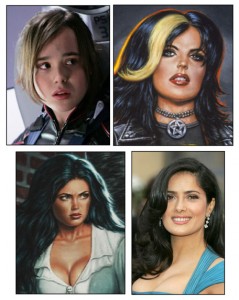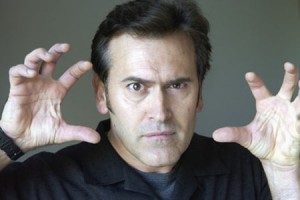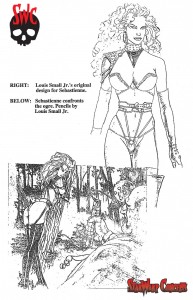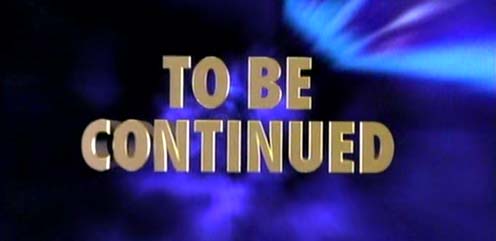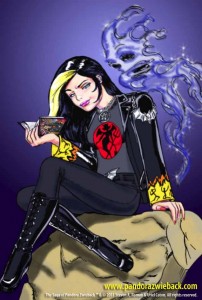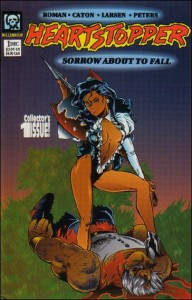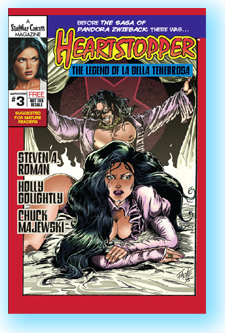 On Saturday, May 4, The ’Warp is celebrating the 11th anniversary of Free Comic Book Day by releasing the rarely seen Heartstopper: The Legend of La Bella Tenebrosa #3, the final issue in what was supposed to be a four-part miniseries published in 1995. The star of Heartstopper was Sebastienne “Annie” Mazarin—yes, the very same Annie who’s showing our resident Goth chick, Pandora Zwieback, how to hunt monsters.
On Saturday, May 4, The ’Warp is celebrating the 11th anniversary of Free Comic Book Day by releasing the rarely seen Heartstopper: The Legend of La Bella Tenebrosa #3, the final issue in what was supposed to be a four-part miniseries published in 1995. The star of Heartstopper was Sebastienne “Annie” Mazarin—yes, the very same Annie who’s showing our resident Goth chick, Pandora Zwieback, how to hunt monsters.
To be quite honest about it, I’ve avoided making references to the comic on this blog because Heartstopper is what’s known in the business as a “mature readers” comic, intended for readers seventeen years of age and up. And since the Pandora Zwieback novels have picked up readers as young as twelve, I previously thought linking to a series that middle-graders shouldn’t be reading wouldn’t be the best decision. (I can say that—I’m not just the writer, I’m the publisher.)
It’s also an example of “bad girl” comics, a politically incorrect category that generated huge sales in the nineties; basically, it meant the comic starred an ass-kicking heroine who was clad in as little clothing as you could get away with. Heartstopper was my blatant attempt to cash in on that popularity. 😀 The three issues have no nudity, sex, or adult language (in other words, four-letter curses), but there’s a bit of bloody violence in the first issue and some sexual tension between characters. But I never mentioned them here when HS 1 became available on last year’s Free Comic Book Day, or that HS 2 became a digital freebie this past Halloween.
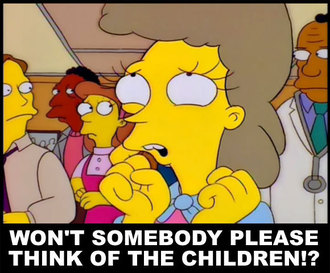 Still, the comics are a part of Annie’s creative past (issue 1 and part of issue 2 were penciled by Pan and Annie’s co-creator, Uriel Caton), and HS 3 is the final issue. And in a world where young adult books are becoming more and more adult as publishers scramble to create the YA equivalent of the “pron” trilogy 50 Shades of Grey, Heartstopper by comparison is pretty tame in its sexual playfulness (again, no sex or nudity). On the other hand, it’s not the best thing I’ve ever written, but hey—if you survived Twilight you’ll survive this. 😀
Still, the comics are a part of Annie’s creative past (issue 1 and part of issue 2 were penciled by Pan and Annie’s co-creator, Uriel Caton), and HS 3 is the final issue. And in a world where young adult books are becoming more and more adult as publishers scramble to create the YA equivalent of the “pron” trilogy 50 Shades of Grey, Heartstopper by comparison is pretty tame in its sexual playfulness (again, no sex or nudity). On the other hand, it’s not the best thing I’ve ever written, but hey—if you survived Twilight you’ll survive this. 😀
To mark the occasion of HS 3’s Free Comic Book Day release, I dug out the following interview, which originally appeared in the December 1994 edition of Capital City Distributions’ catalog, Advance Comics, to promote the publication of Heartstopper #1.
So let’s return now to the 1990s, and the height of comics’ “Bad Girl Era,” to see how 1994 Steve Roman explains his latest project’s history. In the process, you’ll get a little more insight into Annie’s personal history, and discover just where the basic idea for Goth adventuress Pandora Zwieback’s “monstervision” got its start…
Interview: Steve Roman
Steven Roman has been producing the bimonthly series from Starwarp Concepts, Lorelei, since 1993. He now teams with Millennium Publications to bring you the latest bad-but-beautiful-babe comic series, Heartstopper.
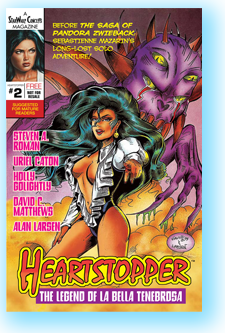 Advance Comics: Heartstopper is about a beautiful shape-shifter who fights monsters in New York City. What sparked the idea?
Advance Comics: Heartstopper is about a beautiful shape-shifter who fights monsters in New York City. What sparked the idea?
Roman: It all started with Louis Small Jr. He left Harris’ Vampirella and was suffering from withdrawal. He wanted a new supernatural character—preferably a beautiful one. I came up with Sebastienne, but Louis’s schedule became tight, so I brought in Uriel Caton to pencil the book. His art is sharp and fast and fluid and more in tune with what I want to do.
AC: What’s the idea behind Heartstopper?
Roman: Sebastienne Mazarin is a 400-year-old shape-shifter whose mother was an Amazonian high priestess and whose father was a French nobleman. Her mother prepared her for the day when an ancient Brazilian deity will come to Earth and kill all of the women. Part of Sebastienne’s training requires her to spend her nights hunting down monsters and ogres in New York City. For reasons that I won’t explain until later, New York City has become a nexus for the world’s supernatural activity. In the day, Sebastienne is a freelance writer. At night she sort of cleans up the town.
AC: A Brazilian deity?
Roman: In Brazilian mythology, there’s a spirit called Jurupari who hates all women.
AC: Can everyone see the New York demons?
Roman: You can’t write and not be influenced by a thousand sources. Heartstopper owes a debt to Nancy A. Collins and her vampire novel, Sunglasses After Dark. It inspired me to create a world where normal people don’t see the darker universe around them. My take on it is that the people in New York can see these monsters—but they’re New Yorkers, and they don’t care. They see weird things all the time. To them, an ogre in Central Park is normal.
AC: The pencils and inks look terrific. Who is the art team?
Roman: Uriel Caton has been working in the industry for several years. He has penciled the Ex-Mutants for Eternity Comics, The Outer Space Babes for Silhouette Studios, and a Cain special for Harris. Alan Larsen, the inker, started in the 1980s boom as the publisher of Belladonna, a book about a 17th-century witch. He has done work for Alpha Productions for their Totem, Sign of the Wardog Annual.
AC: Fans have already gotten a sneak peek at Heartstopper, haven’t they?
Roman: Four pages of the original version by Louis Small Jr. recently appeared in Nightcry. It was supposed to be a preview for a book to be published by Cry For Dawn. That didn’t happen. A few of Uriel’s concept sketches appeared in issue #2 of Lorelei. That got lots of favorable responses from readers and retailers who think Heartstopper is in the same league as Lady Death, Shi, and Vampirella. Another sneak peek will appear in Lorelei #5.
AC: You’re both a writer and publisher?
Roman: In addition to writing Heartstopper for Millennium, I publish Lorelei under the Starwarp Concepts label. I started as a small-press writer and artist and self-published a digest version of Lorelei in 1989. In 1993 I started publishing Lorelei as a regular comic book.
AC: Who will read Heartstopper?
Roman: It’s aimed at fans of Lady Death, Shi, and Vampirella, with a little bit of Image thrown in. Sebastienne is a very loose, fun-loving character. She cracks jokes in a fight. She’s very nonchalant about taking on a group of monsters in Times Square. And because she’s a shape-shifter, she has incredible powers. She can mold her body into anything, which makes for some wild art! Heartstopper has a serious side, but for the most part it’s meant to be a fun read. Sebastienne is a very strong character, very self-assured—and a bit naughty. You’ll love her.
* * *
Heartstopper: The Legend of La Bella Tenebrosa #3—written by Steven A. Roman (The Saga of Pandora Zwieback), penciled by Holly Golightly (School Bites) and inked by “Chainsaw” Chuck Majewski (Harvey Kurtzman’s New Two-Fisted Tales)—is available for free download on May 4, 2013 from the StarWarp Concepts web site.
Heartstopper: The Legend of La Bella Tenebrosa #1 and #2 are also available for free download—just follow the links at StarWarp Concepts’ comics page.
However, if you’re one of those under-seventeen readers of Pan’s adventures…maybe you should wait a few years before checking out Annie during her “bad girl” phase. 😉

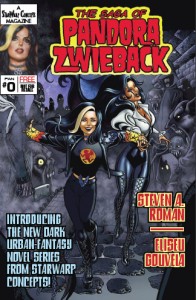 The Saga of Pandora Zwieback #0: Introducing 16-year-old Goth adventuress Pandora Zwieback! Pan is a girl with the ability to see the monsters that regular humans can’t, and with the help of a 400-year-old monster hunter named Sebastienne “Annie” Mazarin, she’s going to protect the world from danger—and maybe even have some fun while doing it.
The Saga of Pandora Zwieback #0: Introducing 16-year-old Goth adventuress Pandora Zwieback! Pan is a girl with the ability to see the monsters that regular humans can’t, and with the help of a 400-year-old monster hunter named Sebastienne “Annie” Mazarin, she’s going to protect the world from danger—and maybe even have some fun while doing it.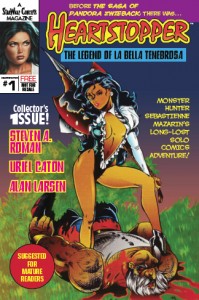 Heartstopper: The Legend of La Bella Tenebrosa #1: In 1994, Sebastienne Mazarin made her debut in this short-lived Mature Readers series from Millennium Publications. Now, for the first time in almost two decades, StarWarp Concepts re-presents this long-lost comics adventure of the monster hunter known as La Bella Tenebrosa (“the beautiful dark one”).
Heartstopper: The Legend of La Bella Tenebrosa #1: In 1994, Sebastienne Mazarin made her debut in this short-lived Mature Readers series from Millennium Publications. Now, for the first time in almost two decades, StarWarp Concepts re-presents this long-lost comics adventure of the monster hunter known as La Bella Tenebrosa (“the beautiful dark one”).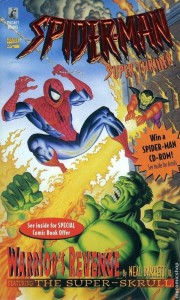 In the late nineties I was an editor for a publisher/book packager named Byron Preiss, who had a license from Marvel Comics to publish original novels based on their characters. Having edited some of the books, and written short stories for a couple of anthologies (Untold Tales of Spider-Man and The Ultimate Hulk), I was offered the chance to take over a YA novel titled Spider-Man Super Thriller: Warrior’s Revenge—Marvel had rejected the manuscript delivered by a mystery and fantasy writer named Neal Barrett Jr. Basically, I was in Byron’s office when news of the rejection came in and he turned to me and said, “So, you want to write it?” Of course I said yes!
In the late nineties I was an editor for a publisher/book packager named Byron Preiss, who had a license from Marvel Comics to publish original novels based on their characters. Having edited some of the books, and written short stories for a couple of anthologies (Untold Tales of Spider-Man and The Ultimate Hulk), I was offered the chance to take over a YA novel titled Spider-Man Super Thriller: Warrior’s Revenge—Marvel had rejected the manuscript delivered by a mystery and fantasy writer named Neal Barrett Jr. Basically, I was in Byron’s office when news of the rejection came in and he turned to me and said, “So, you want to write it?” Of course I said yes!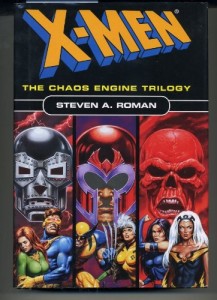 The result was X-Men: The Chaos Engine Trilogy, in which the X-Men fight their archenemy Magneto, Doctor Doom (from the Fantastic Four), and the Red Skull (from Captain America) for control of the Cosmic Cube, a device that allows them to alter reality. All three books sold really well—helped in no small part by the fact that Book 1, X-Men/Dr. Doom, came out in time for the first X-movie. I think that’s when people really started to recognize my byline.
The result was X-Men: The Chaos Engine Trilogy, in which the X-Men fight their archenemy Magneto, Doctor Doom (from the Fantastic Four), and the Red Skull (from Captain America) for control of the Cosmic Cube, a device that allows them to alter reality. All three books sold really well—helped in no small part by the fact that Book 1, X-Men/Dr. Doom, came out in time for the first X-movie. I think that’s when people really started to recognize my byline.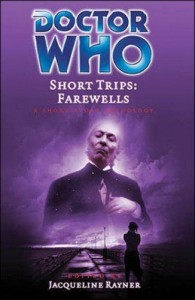 I used to be a major comic book fan, but over the years I got tired with all the superhero stuff—which is kinda funny, considering my professional writing career started with me writing short stories and novels about Spider-Man, the X-Men, and the Incredible Hulk. Now I just spend all my money on Doctor Who merchandise! I’ve been a Who fan—Whovian?—since high school. I even got to write a story for an official Doctor Who anthology!
I used to be a major comic book fan, but over the years I got tired with all the superhero stuff—which is kinda funny, considering my professional writing career started with me writing short stories and novels about Spider-Man, the X-Men, and the Incredible Hulk. Now I just spend all my money on Doctor Who merchandise! I’ve been a Who fan—Whovian?—since high school. I even got to write a story for an official Doctor Who anthology!